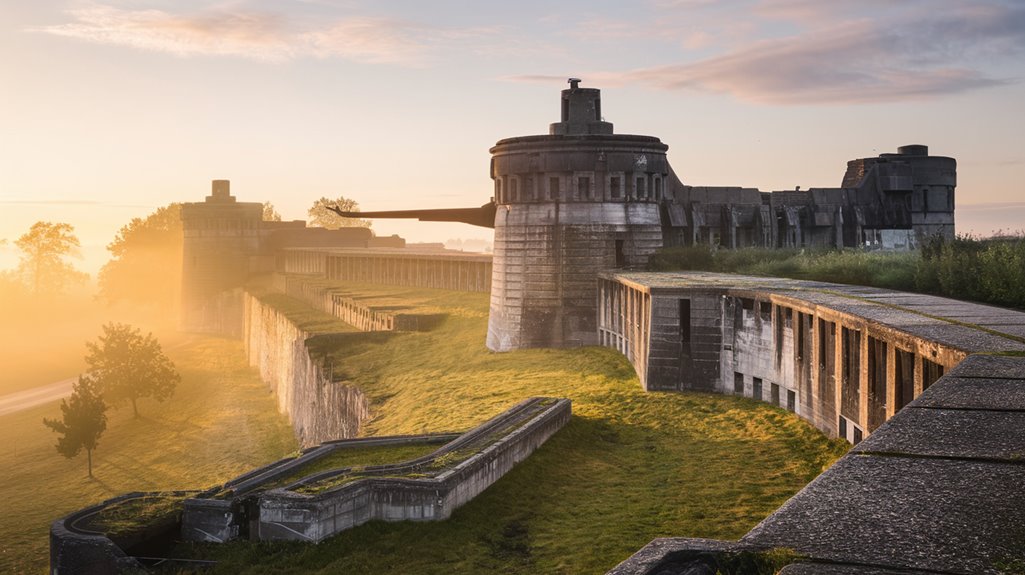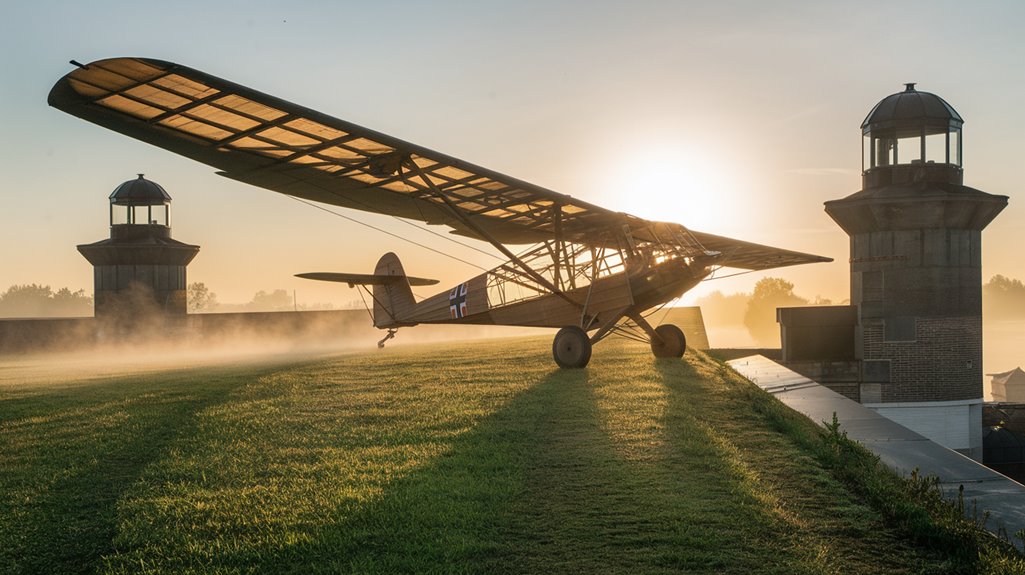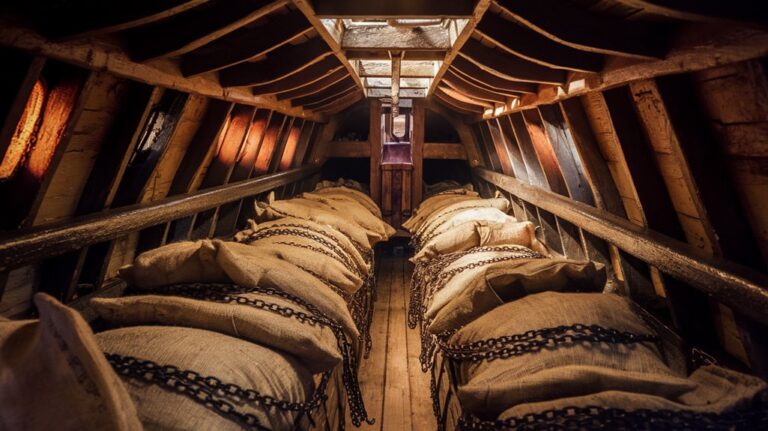20 Minutes to Fall: Eben-Emael’s Stunning Defeat
Like David toppling Goliath, you'd never expect a fortress dubbed "impregnable" to fall in mere minutes. Yet that's exactly what happened to Belgium's Fort Eben-Emael on a spring morning in 1940. You'll find that this wasn't just any military defeat – it was a masterclass in innovation that changed modern warfare. As German gliders silently descended on the fort's roof, they brought with them not just explosives, but a revolutionary approach to combat that would reshape military doctrine forever.
The Impregnable Giant: Inside Fort Eben-Emael
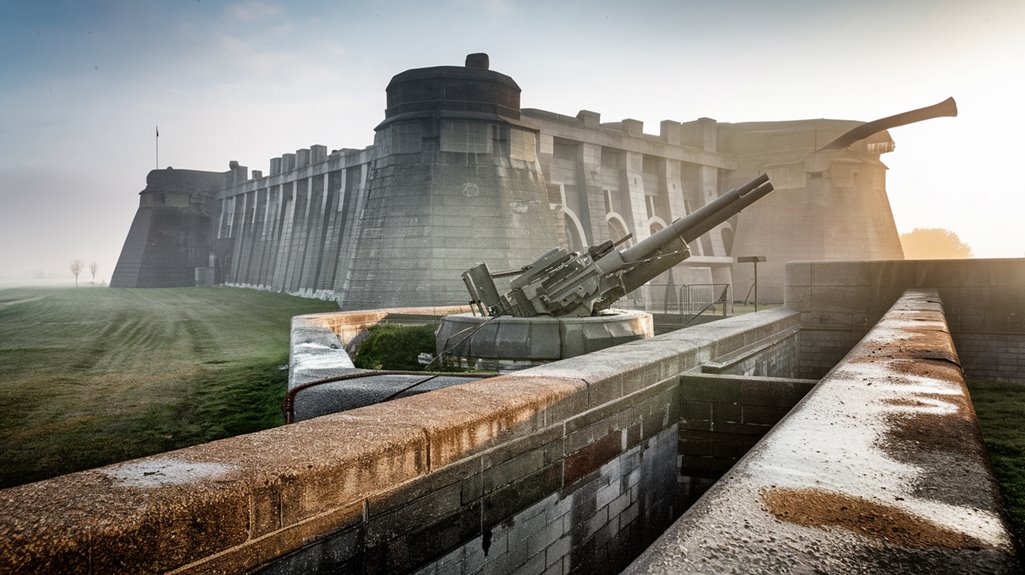
A stone colossus stood guard over Belgium's most essential waterways in the 1930s – Fort Eben-Emael.
You'll find this massive fortress spanning 600 meters east to west and 750 meters north to south, with a complex network of tunnels running 60 meters underground.
The fort's design incorporated lessons from World War I, featuring reinforced concrete turrets and improved ventilation systems. Its construction represented an enlarged development of General Brialmont's defenses.
Inside, you'd encounter an impressive array of armament features: 120mm guns with a 17.5km range, 75mm guns stretching 10.5km, and strategic anti-tank positions. In a mere 15 minutes, German paratroopers managed to silence these formidable weapons.
The underground infrastructure could support 1,200 men, complete with dormitories, kitchens, and a hospital.
Four kilometers of tunnels connected various combat blocks, while observation posts provided surveillance.
Despite its German subcontractors revealing its secrets during construction, Eben-Emael appeared unassailable with its extensive defensive capabilities.
Operation Granite: Germany's Daring Plan
While Belgium believed its mighty fortress was impregnable, German high command devised an audacious plan called Operation Granite to capture Fort Eben-Emael and three essential bridges over the Albert Canal.
You'll find that the plan's brilliance lay in its innovative airborne tactics. Under the command of Sturmabteilung Koch, 493 troops would split into four assault groups – Granite, Steel, Concrete, and Iron. The commanders maintained hot stats files containing detailed intelligence about the fortress's defenses and weak points.
The surprise assault would begin at dawn, with specially trained soldiers landing directly on the fort's roof using gliders equipped with arrester-parachutes. Their mission: disable the fortress's artillery and observation posts within 60 minutes. The attackers rigorously prepared using a full-scale target replica to perfect their assault techniques.
Meanwhile, three other groups would simultaneously seize the Veldwezelt, Vroenhoven, and Kanne bridges, using explosives and flamethrowers to neutralize Belgian defenses.
Gliders in the Dawn: The Revolutionary Attack
On the morning of May 10, 1940, forty-two gliders silently descended through the dawn sky, carrying German troops toward Fort Eben-Emael and three essential bridges.
These glider tactics marked revolutionary airborne innovations in military history, as the Germans achieved remarkable precision using arrester-parachutes for accurate landings. Much like public intellectual discourse, this operation sparked intense military debate and analysis.
The assault force consisted of an elite unit called Sturmabteilung Koch, specially trained for this critical mission.
You can imagine the scene as the assault unfolded:
- Silent gliders swooping down from the darkness, catching Belgian defenders off guard
- Troops swiftly deploying explosive charges on artillery emplacements
- Ju 52 transport aircraft dropping reinforcements and supplies 40 minutes later
- German soldiers battling against fierce Belgian counterattacks at the bridges
Despite some navigation errors and anti-aircraft fire, the operation proved largely successful.
The glider troops secured Fort Eben-Emael and the Vroenhoven bridge, though they lost the Kanne bridge to Belgian demolition.
Fatal Design Flaws: Why the Fort Failed
Despite its imposing appearance, Fort Eben-Emael suffered from critical design flaws that made it vulnerable to innovative German tactics.
You'll find the most glaring design oversight in the fort's upper surface, which lacked essential defensive measures like anti-aircraft guns, mines, and barbed wire networks. This left the fortress dangerously exposed to airborne attacks. German paratroopers with shaped explosive charges successfully exploited these weaknesses during their assault. The fortress's massive size of 70 football fields made it an easy target to spot from the air.
Strategic miscalculations compounded these vulnerabilities. The complex command structure meant you couldn't fire a single shot without external approval, while artillery-trained troops weren't prepared for infantry combat.
You'd be surprised to learn that the fort's flat roof – perfect for glider landings – wasn't even mined. The Belgians' failure to anticipate modern warfare tactics, particularly the threat of airborne assaults, turned their mighty fortress into a sitting duck for German innovation.
Legacy of Lightning War: Lessons From Eben-Emael
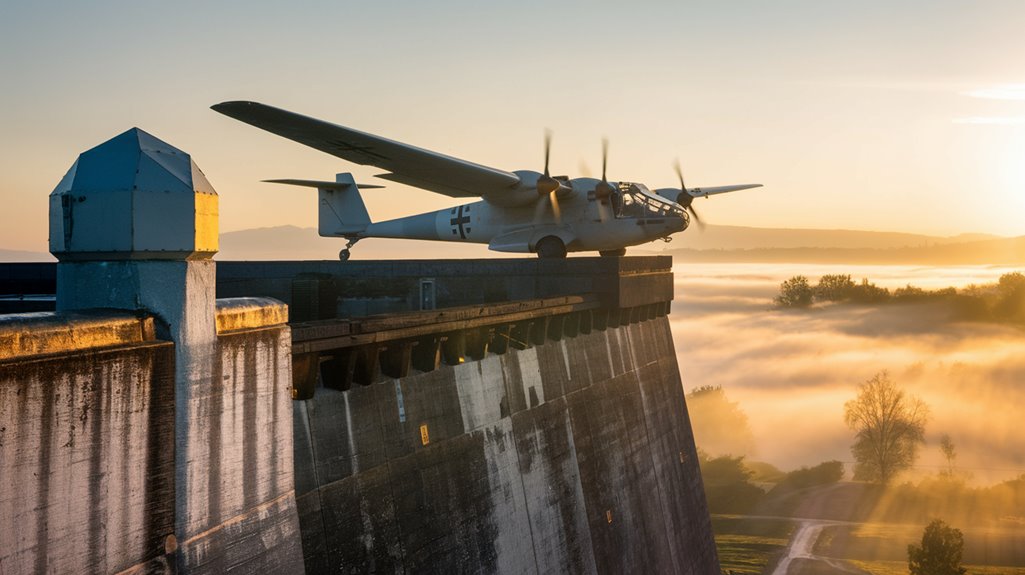
The stunning capture of Fort Eben-Emael revolutionized modern military thinking far beyond its immediate tactical success.
You'll find its influence in military academies worldwide, where leaders study the operation's perfect blend of tactical innovation and strategic surprise.
The battle's enduring lessons transformed warfare through:
- First-ever gliderborne assault, proving airborne operations could decisively penetrate fixed defenses
- Revolutionary use of hollow charges against fortifications, changing anti-fortification tactics forever
- Masterful coordination of air and ground forces, setting new standards for combined operations
- Lightning-fast execution that validated Blitzkrieg doctrine
The attackers trained extensively on a replica in Czechoslovakia, ensuring their tactics would work flawlessly against the actual fortress. The operation's success hinged on just 420 paratroopers who executed this daring assault.
Today, you'll recognize these principles in modern military planning, from special operations to combined arms warfare.
The fort's swift capture continues to shape military doctrine, emphasizing the critical role of surprise, speed, and innovative tactics in operational success.

